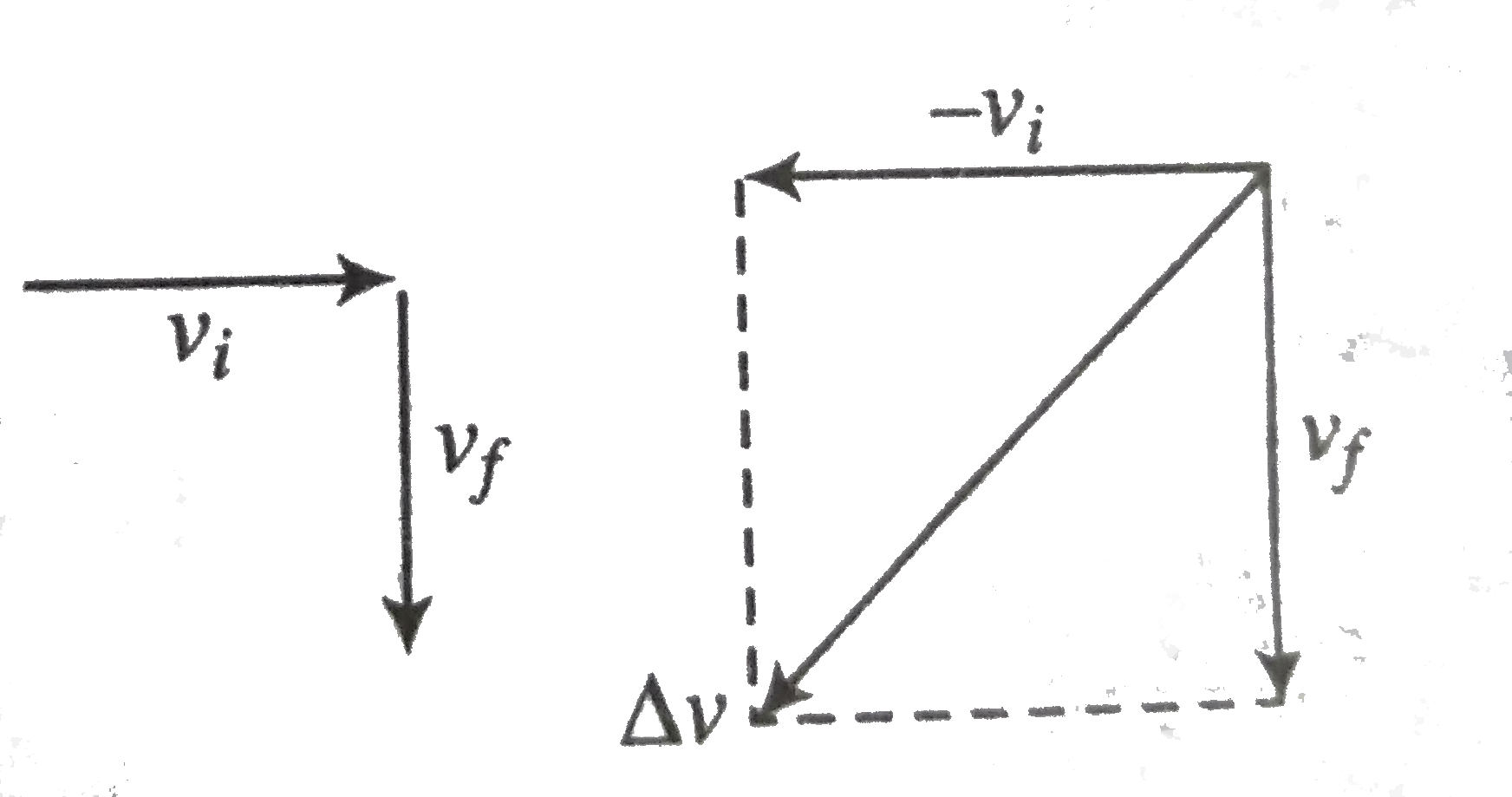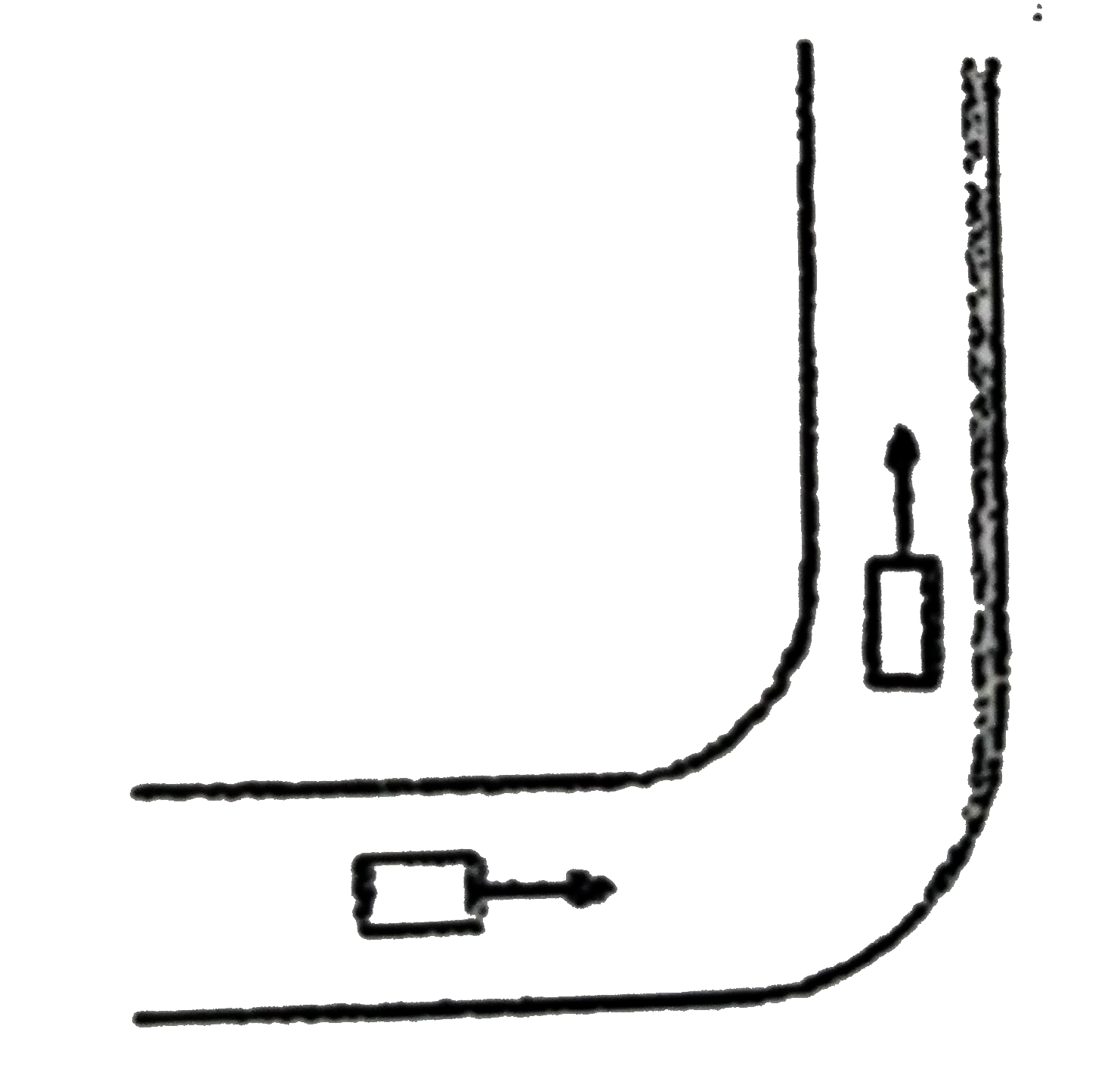A car is moving in east direction. It takes a right turn and moves along south direction without change in its speed. What is the direction of average acceleration of the car?
North east
South east
North west
South west
The correct Answer is:D
d. 
Δ→v=→vf−→vi=→vf+(→vi) .
Topper's Solved these Questions
- MISCELLANEOUS KINEMATICSBook:CENGAGE PHYSICSChapter:MISCELLANEOUS KINEMATICSExercise:Multiple Correct Answer Type
Explore 26 Videos
- MISCELLANEOUS KINEMATICSBook:CENGAGE PHYSICSChapter:MISCELLANEOUS KINEMATICSExercise:Linked Comprehension Type
Explore 35 Videos
- LINEAR AND ANGULAR SIMPLE HARMONIC MOTIONBook:CENGAGE PHYSICSChapter:LINEAR AND ANGULAR SIMPLE HARMONIC MOTIONExercise:Multiple Correct Answer Type
Explore 9 Videos
- MISCELLANEOUS VOLUME 2Book:CENGAGE PHYSICSChapter:MISCELLANEOUS VOLUME 2Exercise:INTEGER_TYPE
Explore 10 Videos
Similar Questions
Knowledge Check
A car moving with a speed of 30ms−1 takes a U-turn in 6 seconds, without changing its speed. What is the average acceleration during these 6 seconds?
A5ms−2B10ms−2C2.5ms−2DzeroA car moving with a speed of 30 ms−1 takes a U-turn in 6 seconds, without changing its speed. What is the average acceleration during these 6 seconds?
A5ms−2B10ms−2C2.5ms−2DZeroAssertion : Acceleration of a moving particle can change its direction without any change in direction of velocity.
Reason : If the direction of change in velocity vector changes, the direction of acceleration vector also changes.AIf the both Assertion and Reason are true and the Reason is correct explanation of the Assertion.BIf both Assertion and Reason are true but Reason is not the correct explanation of Assertion.CIf Assertion is true, but the Reason is false.DIf Assertion is false but the Reason is true.
A car moving with a speed of 25 ms−1 takes a U-turn in 5 seconds, without changing its speed. The average acceleration during these 5 seconds is
View SolutionA particle moving with a speed v changes direction by an angle θ, without change in speed.
View SolutionAparticle moves with a speed v changes direction by an angle θ, without change in speed.
View SolutionStatement I Acceleration of a moving particle can be changed without changing direction of velocity.
Statement n If the direction of velocity changes, so the direction of acceleration also changes.
View SolutionA particle moving with velocity V changes its direction of motion by an angle θ without change in speed. Which of the following Statement is not correct?
View Solution
